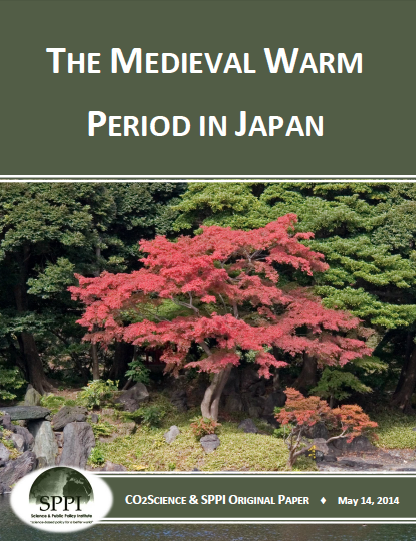News / Nature
The Medieval Warm Period in Japan

The Medieval Warm Period (MWP) was a global climatic anomaly that encompassed a few centuries on either side of AD 1000, when temperatures in many parts of the world were even warmer than they are currently. The degree of warmth and associated changes in precipitation, however, sometimes varied from region to region, with the result that the MWP was expressed somewhat differently now and then in different parts of the world. How it manifested itself in Japan is the subject of this Summary.
Kitagawa and Matsumoto (1995)1 analyzed ð13C variations of Japanese cedars growing on Yakushima Island, southern Japan (30°20'N, 130°30'E), in an effort to reconstruct a high-resolution proxy temperature record covering the past two thousand years, while they applied spectral analysis to the ð13C time series in an effort to learn if any significant periodicities were present in the data. These efforts revealed that there was significant decadal to centennial-scale variability throughout the record, with temperatures fluctuating by about 5°C across the series. Most notable among the fluctuations were multi-century warm and cold epochs. Between AD 700 and 1200, for example, there was about a 1°C rise in average temperature, which in the words of the two researchers, "appears to be related to the 'Medieval Warm Period'."
In contrast, temperatures were about 2°C below the long-term pre-1850 average during the multi-century Little Ice Age that occurred between AD 1580 and 1700. Kitagawa and Matsumoto also reported finding significant temperature periodicities of 187, 89, 70, 55 and 44 years; and noting that the 187-year cycle closely corresponds to the well-known Suess cycle of solar activity, and that the 89-year cycle compares well with the Gleissberg solar cycle, they concluded that their findings provided strong support for a sun-climate relationship. In addition, their results gave added strength to the growing body of evidence that indicates that the Medieval Warm Period and Little Ice Age were both global phenomena; and they thus concluded there was nothing unusual, unnatural or unprecedented about Current Warm Period temperatures in this region, which according to real-world data remain about one degree Celsius lower than the peak warmth of the Medieval Warm Period.
